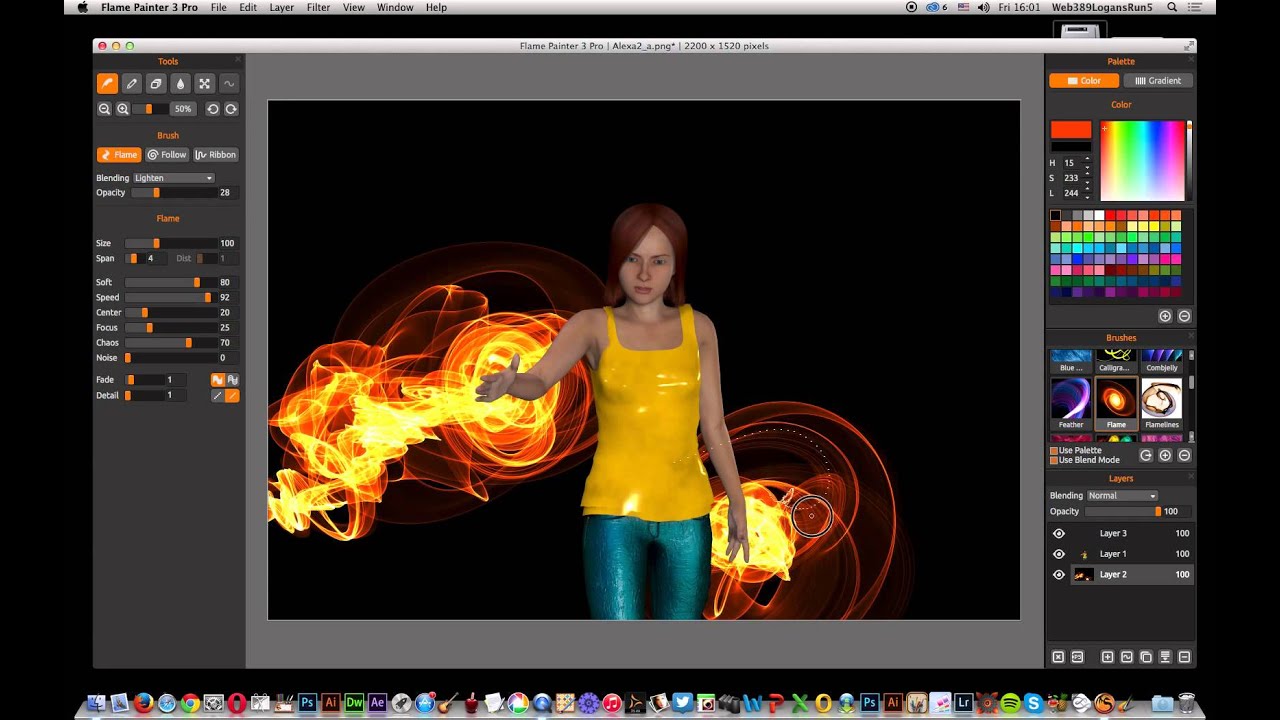


Two entities that allow Particles to nest each other are: SingleChildParticle mixin andĪ SingleChildParticle may help you with creating Particles with a custom behavior. Nesting these behaviors together to achieve the desired visual effect. That is achieved by encapsulating small pieces of behavior in every particle and then progress, ), ), ), ), ) Nesting behavior ¶įlame’s implementation of particles follows the same pattern of extreme composition as Flutter ComputedParticle ( renderer: ( canvas, particle ) => canvas.

add ( ParticleComponent ( // Renders a circle which gradually changes its color and size during the particle lifespan. Same effect could be achieved by translating the Canvas Simply translates the underlying Particle to a specified Vector2 within the rendering Canvas.ĭoes not change or alter its position, consider using MovingParticle or AcceleratedParticle
#Flame painter 2.0 how to
More examples of how to use these behaviors together are availableĪll the implementations are available in the The FlareParticle renders Flare animation within a Particle effect The ComponentParticle renders Flame Component within a Particle effect The ImageParticle renders dart:ui Image within a Particle effect The SpriteParticle renders Flame Sprite within a Particle effect The CircleParticle renders circles of all shapes and sizes The AcceleratedParticle allows basic physics based effects, like gravitation or speed dampening The MovingParticle moves its child between two predefined Vector2, supports Curve The TranslatedParticle translates its child by given Vector2 Built-in particles ¶įlame ships with a few built-in Particle behaviors: The lifespan is passed down to all the descendants of a given Particle, if it supports any of add ( ParticleComponent ( particle )) // Will print values from 0 to 1 with step of. It can beĬonfigured with a double, represented in seconds (with microsecond precision) by passing it intoįinal particle = Particle ( lifespan: 2.0 ) game. Time within the Particle itself is tracked using the Flame Timer class. Used to make the ParticleComponent remove itself once its internal Particle has reached the end You can find more examples of how to use different built-in particles in various combinationsĪ behavior common to all Particles is that all of them accept a lifespan argument. generate ( count: 10, generator: ( i ) ) ) ) Offers greater flexibility // compared to built-in behaviors. // All the behaviors are defined explicitly. generate ( count: 10, generator: ( i ) => pt. Only Particles with SingleChildParticle mixin can be used as chainable behaviors. // Expresses the same behavior as above, but with a more fluent API. generate ( count: 10, generator: ( i ) => AcceleratedParticle ( acceleration: randomVector2 (), child: CircleParticle ( paint: Paint (). // Defining a particle effect as a set of nested behaviors from top to bottom, one within another: // ParticleComponent // > ComposedParticle // > AcceleratedParticle // > CircleParticle game. Random rnd = Random () Vector2 randomVector2 () => ( Vector2.


 0 kommentar(er)
0 kommentar(er)
